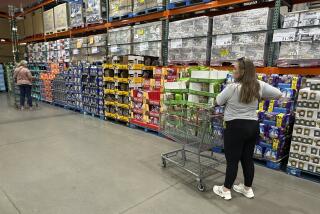Sales of previously owned homes jump in August
- Share via
Sales of previously owned U.S. homes were up sharply in August, a ray of light for the nation’s beaten-down housing market. But economists doubt the gains will last.
The number of homes sold rose 7.7% from July and 18.6% from August 2010, when sales were depressed after the expiration of a popular tax credit for buyers, according to the National Assn. of Realtors.
Although analysts had expected an increase in sales last month, many were surprised that they rose as much as they did. Economists polled by Bloomberg News had estimated a 1.7% gain on average.
Economist Tom Lawler expected a stronger jump, based on regional data he had gathered.
“Of course, sales in many of those markets were extremely weak last August, which was pretty soon following the expiration of the home buyer tax credit,” Lawler wrote Tuesday on the Calculated Risk blog.
Other economists also doubt that last month’s gain signals a turnaround.
“The recent trend in mortgage applications is downwards, so it is hard to see any further sustained rise in sales in the near term,” said Ian Shepherdson, chief U.S. economist for High Frequency Economics.
Regionally, sales were up 20.6% over August 2010 in the West, 16.9% in the South, 26.7% in the Midwest and 10% in the Northeast. Sales were weaker in the Northeast because Hurricane Irene disrupted some sales, the association said.
The Realtor group said homes sold in August at a seasonally adjusted annual rate of 5.03 million units in August, up from an upwardly revised 4.67 million in July and 4.24 million in August 2010.
The national median home price was $168,300 in August, down 5.1% from the same month last year.
Distressed property sales –- those of homes in foreclosure or in which the borrower is in default –- accounted for 31% of transactions last month, compared with 29% in July and 34% in August 2010.
The inventory of previously owned homes for sale fell 3% to 3.58 million, which represents a supply of about 8 1/2 months at the current sales pace. Economists typically consider a supply of six months to be healthy.
More to Read
Inside the business of entertainment
The Wide Shot brings you news, analysis and insights on everything from streaming wars to production — and what it all means for the future.
You may occasionally receive promotional content from the Los Angeles Times.










